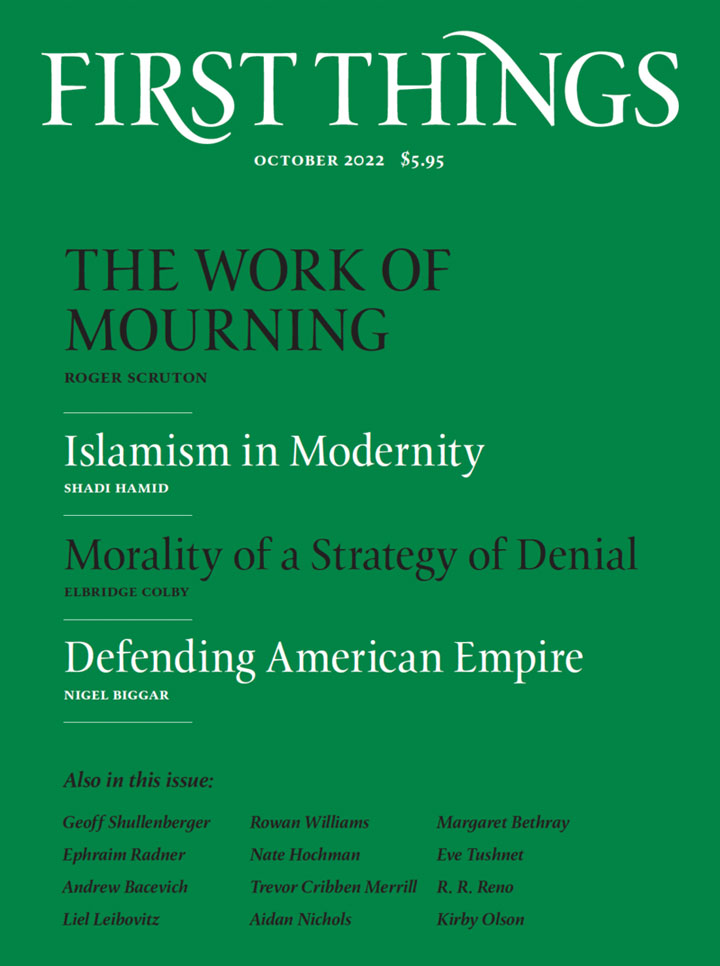When I was twenty-four, I spent several weeks sleeping on the floor of the Brussels Salvation Army, waiting to start a French course. I was on my way to mission work in Burundi. I shared a room with a half dozen other men from various backgrounds. One, named Gershom, was a Romanian Jew, who had somehow fled his country and become a Christian. He was filled with strange ideas, fueled in part by having read recondite philosophy, and he argued incessantly with an Arab man who slept next to him. I would listen in utter puzzlement to their debates and marvel at their passion. Gershom was an oddity, a baptized Jew from behind the Iron Curtain, yet in a sense a universal figure filled with the excitement of rediscovering God as a living being.
I put Gershom out of my mind until just a few years ago, when I saw his name on a list of people who were protesting the desecration of a local Jewish cemetery. He had made it to Canada. At the time we met in Brussels, I was on my way elsewhere, though, as it turned out, to a place also of troubling new faith. Burundi was a land that, in its own way, fulfilled a Romanian Jew’s astonished vision of God.
By 1980, Burundi had received a fifty-year Christian cultural infusion, both Catholic and Protestant. But the young were not yet really shaped by this colonial bequest—horrendous war and turmoil had seen to that. For many, the Christian faith simply was brand new, and stubbornly remained that way for several decades as war continually unraveled the fragile skein of nascent belief. Having left in the mid-1980s, I returned in 2006. The nation had just emerged from more than a decade of civil war. While there, I attended a gathering of young people—several hundred of them. The songs were novel, the mood was vibrant, the testimonies raw. Something had happened during those thirteen years of chaos, finally enlivening the bequest of the long-departed missionaries. People who have observed the African Christianity of the past half-century sometimes say that this surging fervor is what the early Church must have been like, not in form but in spirit. Watching the testimonies of these young people, I sensed it too. The world was fresh again, made anew, and the living Jesus roamed about, brushing right by us in our midst. These are things one can feel.
Christianity in North America seems to be aging, even among younger believers whose Christian faith is strong. That traditional faith isn’t wrong or untrue. But it is being deprived of the freshness that comes, not simply with conversion and catechism, but with conversion into newness and life in that novum. Is it possible to know the Eucharist too well? To be too familiar with the Bible?
Certainly, I discovered the Bible anew as a young priest working in Burundi. What I found was not some new way of reading the Bible, but what the Bible sounds like to a new faith. It sounds like the words of God spoken “face to face.” The Scriptures did not strike people in Burundi as odd in their forms and stories. It took me some time to realize this: So much of local life in the hills and villages was similar to Scripture’s landscape—the roads, the encounters, the food, the way the day was spent, the dust, the demons, the thugs, the yearning for children, and the desperation for survival. There were no unusual or remote lifeforms in the Bible’s stories. But because of this, the figures within them had not fallen into the neatly acceptable tropes that we Westerners have by now unconsciously and immediately translated them into, mostly moral principles of faith, justice, compassion, and steadfastness: the widow and her mite; the Good Samaritan. That is what we Westerners do—otherwise the biblical stories seem like the folktales of our childhood, with their strange clothing, antiquated social roles, and stilted conversations. We then arrange all this on the scaffolding of our dogmas, whether Catholic or Protestant, which we have received ready-made. This reified biblical imagination is further solidified as we move through the cultural dissonances of our current surroundings. Faith rests comfortable (or often not) on old ideas slotted into stable niches.
Instead, for the Burundi Christians I came to know—“new Christians”—the scriptural stories were realistic all the way down. Ruth’s plaintive voice could be heard as if spoken that very day in the dusty streets that had so many people struggling with loss. So, too, were the emotions, the responses, the outcomes. Faith was less a matter of ordering the stories’ “truth” than simply of living with them and seeing what happens. When Jesus spoke, he simply spoke, with the immediacy of any speech, but also with the power of demand. “Come follow me” meant just that in the ears of new Burundi Christians.
I was perplexed, irritated, and eventually shamed by the simple literalism of hearing and response in these cases: “Do you love me?” Well, I had better answer! “Sell what you have.” Who is this who asks me? These new Christians were closer to St. Anthony, the third-century man who walked into a church and heard Matthew’s Gospel as words from Jesus’s lips, addressed by a Person to a person, to him. There is a paradox here. For those in Burundi, Scripture was “culturally” familiar. Its world was their world. But rather than domesticating Scripture’s words, in this case it released their power with the tangible suddenness and closeness of a pressed encounter in a crowd: Right here, right now, listen! You can walk away, of course. Still, the words were quintessentially particular and real, charged with the possibility of making all things new.
I too was finally forced to listen.
There are many places where faith is new—even in our day and in our midst. New faith is not just about naivete. It is about revelation. When believers encounter new faith, it brings into view what has always been there but has grown dim for us over time. My own reinvigoration in faith has, more recently, come with people like Gershom—Jewish Christians whom I have met and spent time with only over the past few years. For these Jewish followers of Jesus, Jesus is the Messiah of Israel, even now, even for those who know far better than I all about messiahs and longing for them. This unabashed acclamation is not what I am used to hearing in the Gentile Church, which makes the same claim but with the fatigue that comes from two thousand years of formal assertion. I was a new Christian once, too; but at the time, I received what was old, in a Gentile sense, not what was new. What was old—from the beginning (1 John 1:1)—has stood me in good stead and opened up vistas of glory. I have no regrets. But there have been costs, too, not the least of which is complacency masked by theological sophistication. The good scribe of the kingdom brings out the old and new together (Matt. 13:52).
I learned about Paul Philip Levertoff only recently. Born in 1878, this scion of a prominent Lithuanian Hasidic family became a follower of Jesus as a young man, maintained and deepened his scholarly skills in Jewish mysticism (he was a prominent translator of the Zohar), and later became an Anglican priest in England, where he led a congregation in London. He continued to ruminate, write, and witness over the years. Levertoff sought to present Jesus to his Jewish brethren in a way that was loosened from the tired faith of Gentile Christendom that no longer sang the songs of Zion. Among other things, he developed, with the permission of the Bishop of London, a Hebrew Communion service, ordered according to Hasidic prayers and songs, within which was nestled the Eucharistic liturgy. “The Meal of the Holy King,” he called it. His daughter Olga wrote a small book about its spirit, which remains unsettling to this day. (Levertoff’s other daughter, the poet Denise Levertov, was less interested in these matters.) I can attest to the liturgy’s freshness of expression in the minds of some Jews who have participated in it. The discovery of the living Messiah, now colored in the prayers and hymns of those who sought him for centuries in the depths of their hearts but also over the very terrain described in the Bible’s long record, was, for a brief time, in Levertoff’s liturgy, both troubling and liberating among Jews in London.
While Levertoff’s order of service was followed in his parish for several decades, his congregation, located in a poor immigrant area, didn’t flourish for long, and the building itself—Holy Trinity, Shoreditch—was demolished in the late twentieth century. I went to visit the site recently. It is now a fenced playground, next to former tenements that have been transformed into sought-after apartments in a currently hip neighborhood. There are young people all around; but the place where the vibrancy of new faith was once on offer no longer is.
We need new faith in our midst. We need to free it, to sit with it, to be troubled by it, to let it astonish us. Old churches are crumbling, along with the traditions we thought were their glory—but we can perhaps feel some excitement as well. The field is being cleared to hear the gospel anew. Let us have ears to hear.
Ephraim Radner is professor of historical theology at Wycliffe College.
Image by Steve Evans via Creative Commons. Image cropped.


